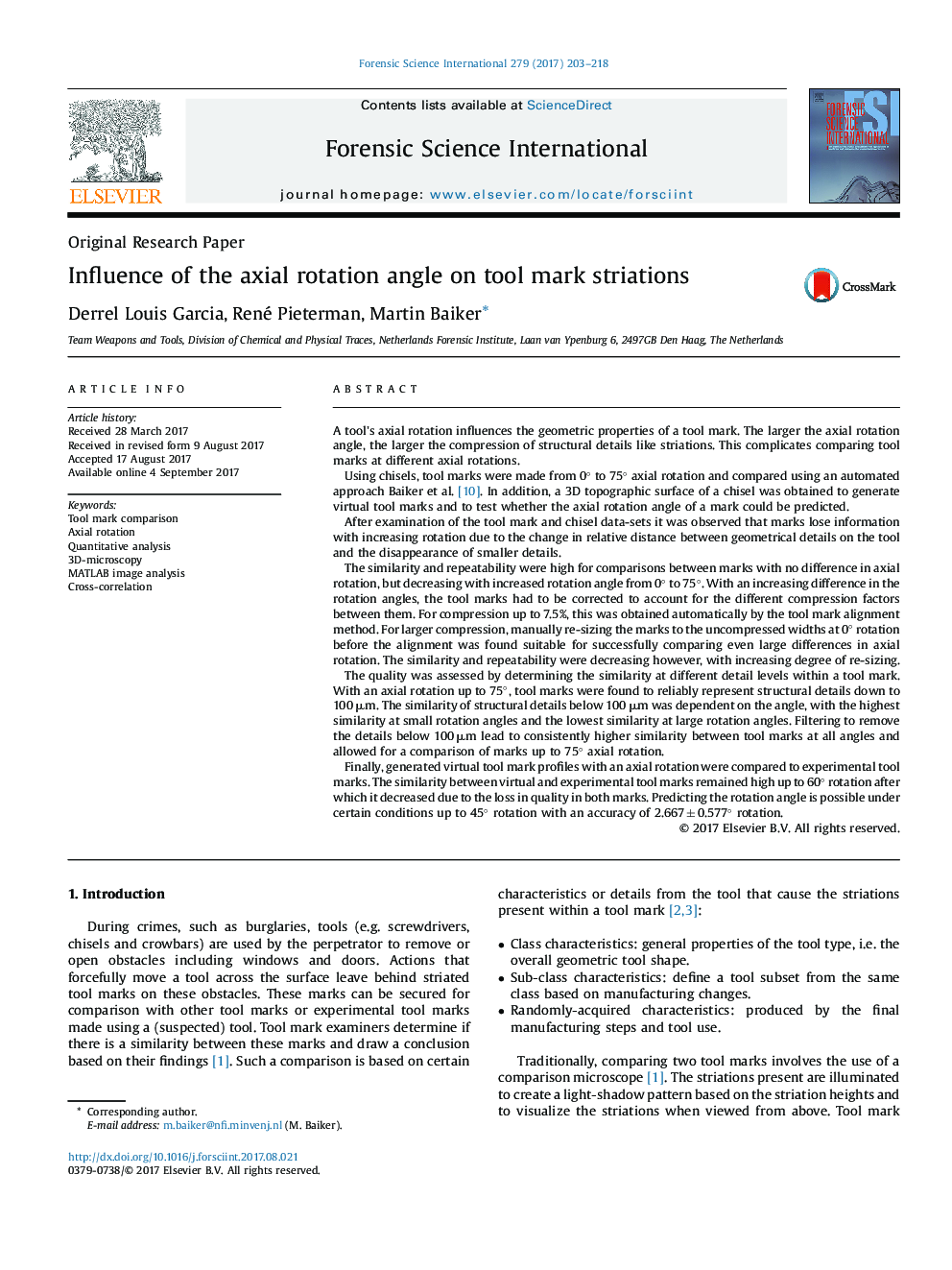| کد مقاله | کد نشریه | سال انتشار | مقاله انگلیسی | نسخه تمام متن |
|---|---|---|---|---|
| 6462117 | 1421971 | 2017 | 16 صفحه PDF | دانلود رایگان |
- Comparison of tool marks of axially rotated chisels.
- Generation of virtual tool marks using 3D surfaces models of chisels.
- Axial rotation mainly affects small structural details and small striations.
- Resizing rotated tool marks enables comparing marks of different angles.
- Using virtual tool marks, the axial rotation of a tool can be accurately estimated.
A tool's axial rotation influences the geometric properties of a tool mark. The larger the axial rotation angle, the larger the compression of structural details like striations. This complicates comparing tool marks at different axial rotations.Using chisels, tool marks were made from 0° to 75° axial rotation and compared using an automated approach Baiker et al. [10]. In addition, a 3D topographic surface of a chisel was obtained to generate virtual tool marks and to test whether the axial rotation angle of a mark could be predicted.After examination of the tool mark and chisel data-sets it was observed that marks lose information with increasing rotation due to the change in relative distance between geometrical details on the tool and the disappearance of smaller details.The similarity and repeatability were high for comparisons between marks with no difference in axial rotation, but decreasing with increased rotation angle from 0° to 75°. With an increasing difference in the rotation angles, the tool marks had to be corrected to account for the different compression factors between them. For compression up to 7.5%, this was obtained automatically by the tool mark alignment method. For larger compression, manually re-sizing the marks to the uncompressed widths at 0° rotation before the alignment was found suitable for successfully comparing even large differences in axial rotation. The similarity and repeatability were decreasing however, with increasing degree of re-sizing.The quality was assessed by determining the similarity at different detail levels within a tool mark. With an axial rotation up to 75°, tool marks were found to reliably represent structural details down to 100 μm. The similarity of structural details below 100 μm was dependent on the angle, with the highest similarity at small rotation angles and the lowest similarity at large rotation angles. Filtering to remove the details below 100 μm lead to consistently higher similarity between tool marks at all angles and allowed for a comparison of marks up to 75° axial rotation.Finally, generated virtual tool mark profiles with an axial rotation were compared to experimental tool marks. The similarity between virtual and experimental tool marks remained high up to 60° rotation after which it decreased due to the loss in quality in both marks. Predicting the rotation angle is possible under certain conditions up to 45° rotation with an accuracy of 2.667 ± 0.577° rotation.
Journal: Forensic Science International - Volume 279, October 2017, Pages 203-218
